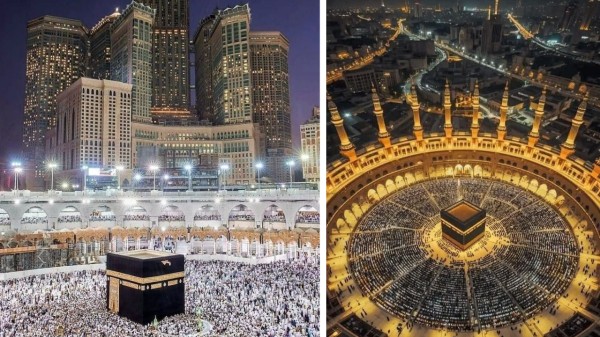

By signing in or creating an account, you agree with Associated Broadcasting Company's Terms & Conditions and Privacy Policy.


By signing in or creating an account, you agree with Associated Broadcasting Company's Terms & Conditions and Privacy Policy.

New Delhi: Umrah is a revered Islamic pilgrimage to Mecca that holds deep spiritual significance for Muslims worldwide. Unlike Hajj, which occurs during specific days each year, Umrah can be performed at any time, offering flexibility for devotees. This shorter pilgrimage is a profound journey of spiritual renewal, involving acts of worship that bring Muslims closer to Allah and purify the soul. Umrah provides a unique chance for reflection and devotion throughout the year.
For the Islamic community, Umrah is more than a travel ritual; it is a symbol of faith, humility, and unity. The pilgrimage includes key rites like entering Ihram, performing Tawaf (circling the Kaaba), and walking between the hills of Safa and Marwah during Sa’i. These actions honour the Prophet Muhammad’s traditions and deepen the pilgrim’s spiritual connection. For many, Umrah represents a personal quest for peace and forgiveness amid life’s challenges.
Before entering Mecca, pilgrims don the Ihram attire—two simple white cloths for men, and modest clothing for women—and make a formal intention to begin the pilgrimage. This state signifies ritual purity and respect.

Pilgrims walk seven times counterclockwise around the Kaaba, reflecting the unity of believers in worshiping one God. This act deepens spirituality and represents the centre of Islamic faith.
Following Tawaf, pilgrims walk seven times between these two hills, commemorating Hagar’s search for water for her son Ishmael. It is a symbol of perseverance and trust in God’s mercy.
To conclude Umrah, pilgrims shave or trim their hair as an act of renewal and humility. This marks the completion of the pilgrimage cycles and provides a fresh spiritual start.
While both Umrah and Hajj are precious Islamic pilgrimages to Mecca, they differ significantly in obligation, timing, and rituals. Hajj is mandatory once in a lifetime for Muslims who are physically and financially able. It occurs during a specific month of the Islamic calendar called Dhul Hijjah and involves a series of elaborate rituals over several days, including standing at Arafat and stoning the devil.
In contrast, Umrah is voluntary, shorter, and can be performed anytime during the year excluding the Hajj days. It includes fewer rituals—primarily Ihram, Tawaf, Sa’i, and hair trimming. Though both pilgrimages cleanse the soul and bring one closer to Allah, Hajj holds greater religious weight as one of the five pillars of Islam, while Umrah serves as a spiritual refreshment and is highly recommended.
Umrah is a profound experience rooted in tradition, humility, and devotion. It strengthens faith and offers spiritual cleansing, making it a treasured journey for Muslims. Understanding these rituals helps prepare pilgrims for a meaningful, reflective pilgrimage that enriches their religious lives.








